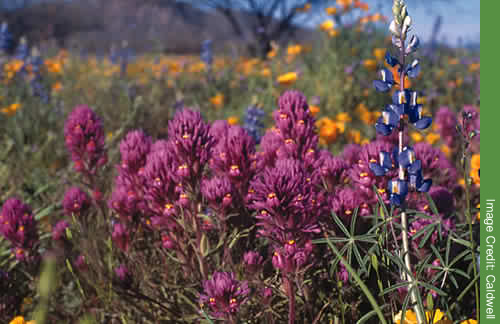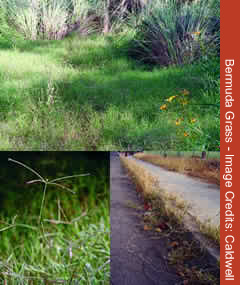
 |
|
|
|
|
|
Some of Arizonaís most beautiful wildflower areas are threatened due to overcrowding by nonnative, invasive plants. Giant reed, and Bermuda grass, a common lawn grass, have escaped from yards and can now be found chocking out fragile desert wetlands across the southwest.
|
 |
| Often, invasive species donít reveal themselves immediately. They may seem to be well-behaved landscape plants for decades. Eventually a few adapt to natural areas. Once adapted, the invasive plantís population explodes. Without prompt action, invaders may overwhelm an ecosystem. Such is the case with fountain grass. Introduced as a graceful ornamental and widely planted, it disperses by seed and spreads into canyons, washes and along roadsides. It not only crowds out natives, but also dries into flammable fuel. Unlike native desert plants that are often killed by hot fires, fountain grass re-sprout quickly after a burn and can dominate a landscape and fueling even larger fires. |
|

- Fuel unnatural fires
- Displace native vegetation
- Degrade wildlife habitat
- Deplete soil nutrients
- Increase allergens
- Alter natural water flows

- Difficult to control, once established
- Heavy seed production
- Rapid growth
- Aggressive seed dispersal
- Reproduction without pollination
- Tolerance to a wide range of soils
- Toxic or unpalatable to wildlife